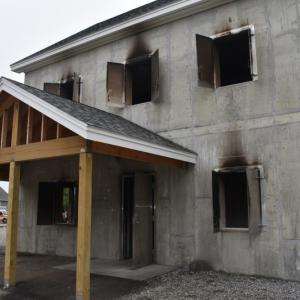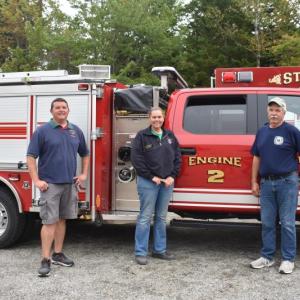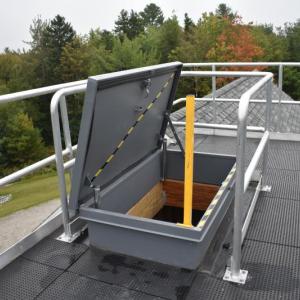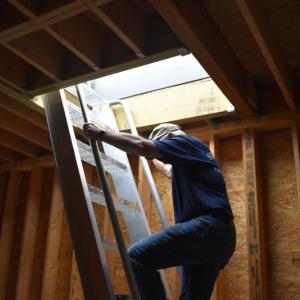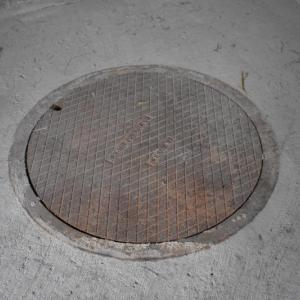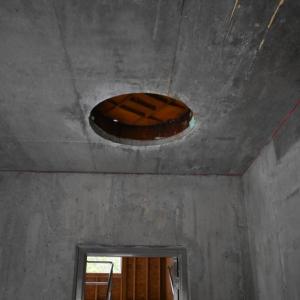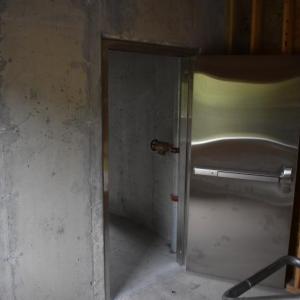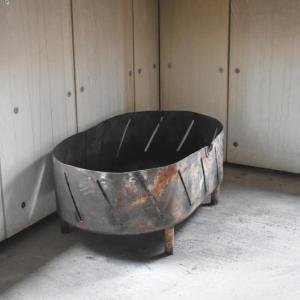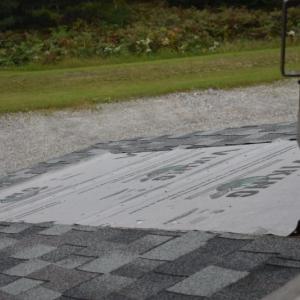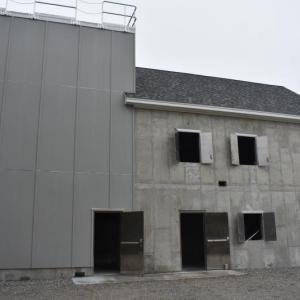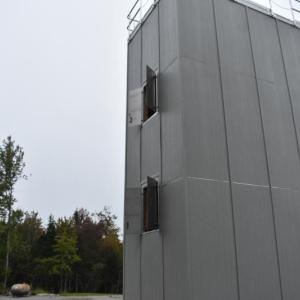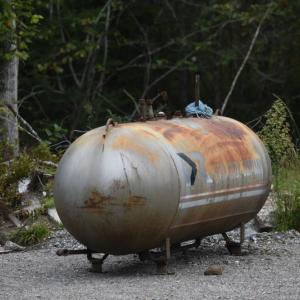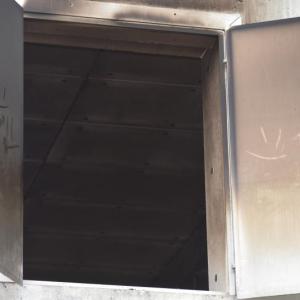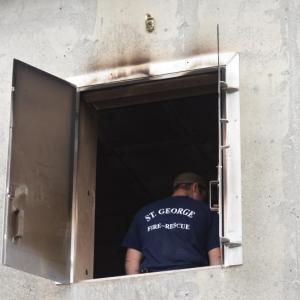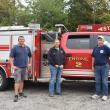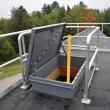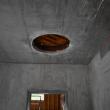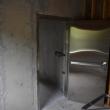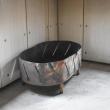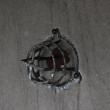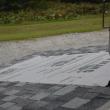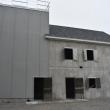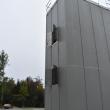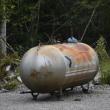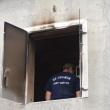Expanded St. George fire training facility takes county response education to new level
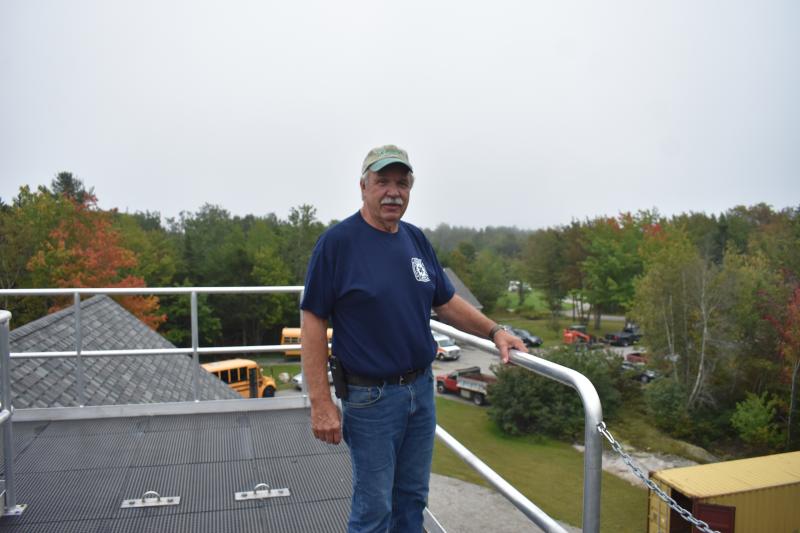 Former St. George Fire Chief and former Town Manager Timothy Polky stands at the top of the new multi-level Live Burn Fire Training Facility in Spruce Head. (Photo by Sarah Thompson)
Former St. George Fire Chief and former Town Manager Timothy Polky stands at the top of the new multi-level Live Burn Fire Training Facility in Spruce Head. (Photo by Sarah Thompson)
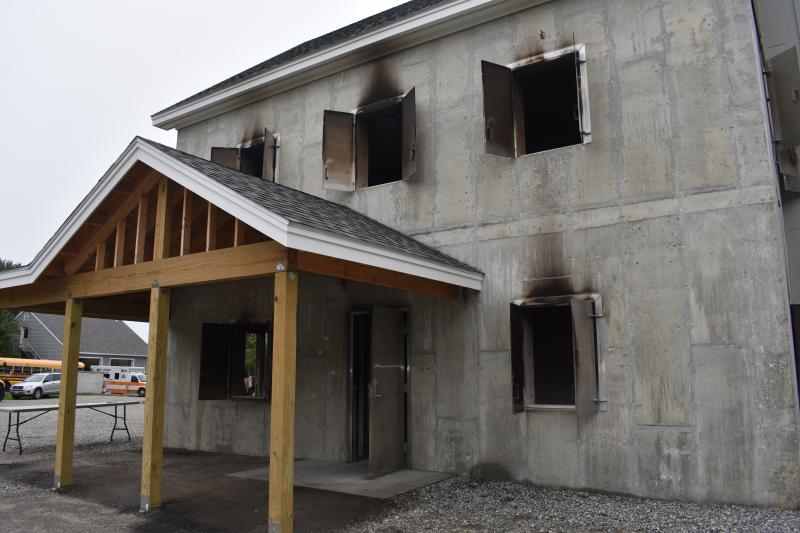 (Photo by Sarah Thompson)
(Photo by Sarah Thompson)
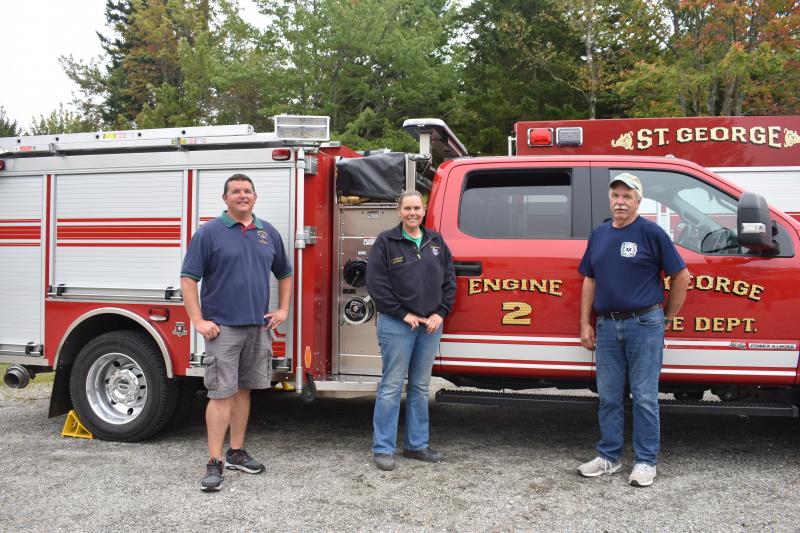 St. George Asst. Chief Chris Leavitt, St. George Ambulance director Amy Dyer-Drinkwater, and Timothy Polky stand in front of the newest addition to the St. George Fire Department fleet. (Photo by Sarah Thompson)
St. George Asst. Chief Chris Leavitt, St. George Ambulance director Amy Dyer-Drinkwater, and Timothy Polky stand in front of the newest addition to the St. George Fire Department fleet. (Photo by Sarah Thompson)
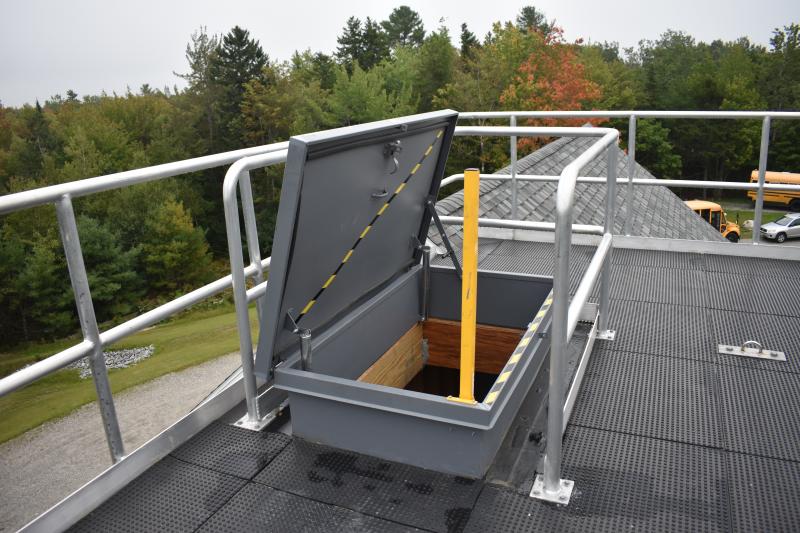 (Photo by Sarah Thompson)
(Photo by Sarah Thompson)
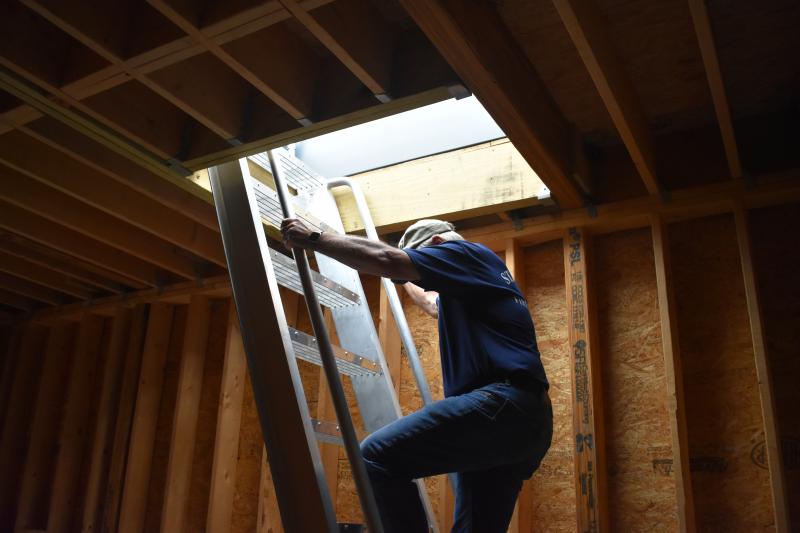 (Photo by Sarah Thompson)
(Photo by Sarah Thompson)
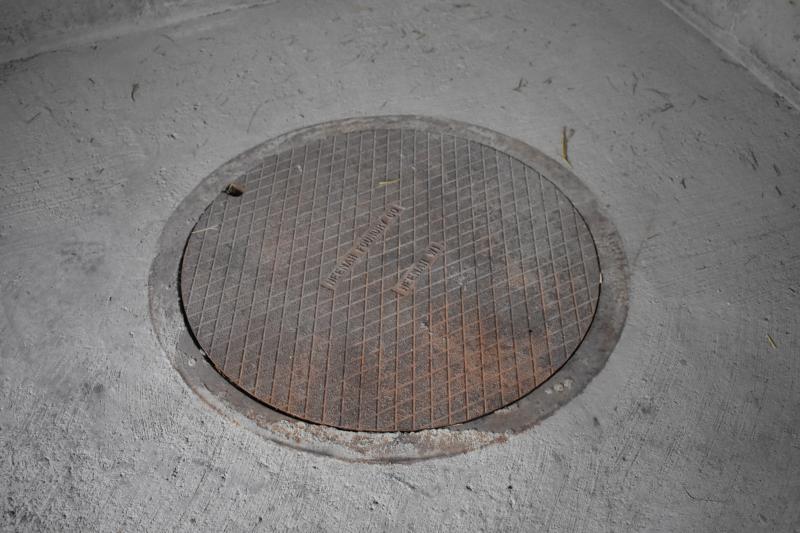 An outlet into the floor for contained-space drills. (Photo by Sarah Thompson)
An outlet into the floor for contained-space drills. (Photo by Sarah Thompson)
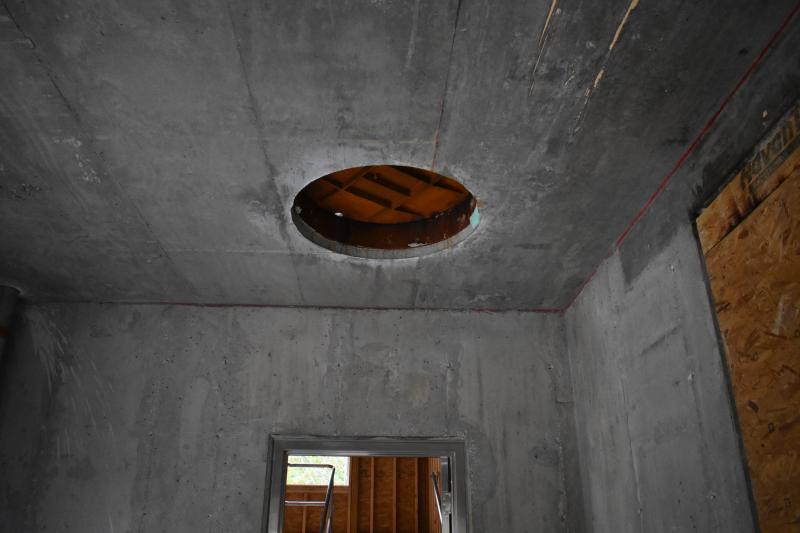 Imagine being lowered through this hole in the ceiling. (Photo by Sarah Thompson)
Imagine being lowered through this hole in the ceiling. (Photo by Sarah Thompson)
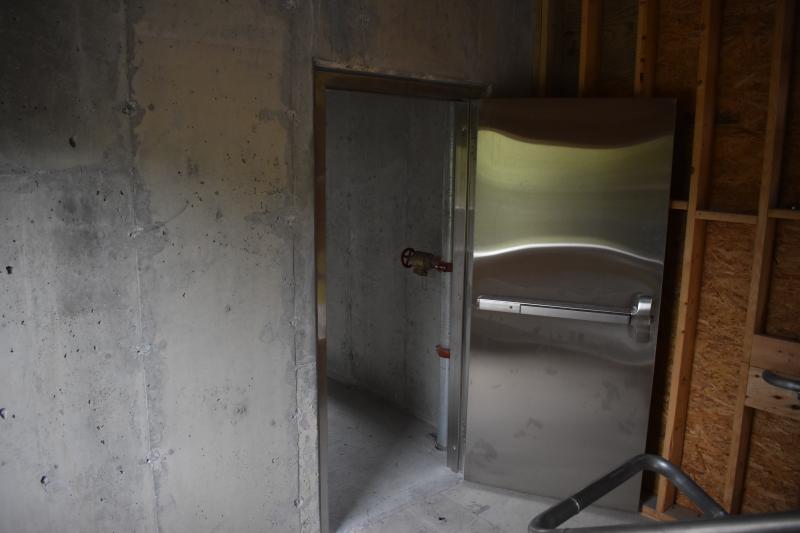 (Photo by Sarah Thompson)
(Photo by Sarah Thompson)
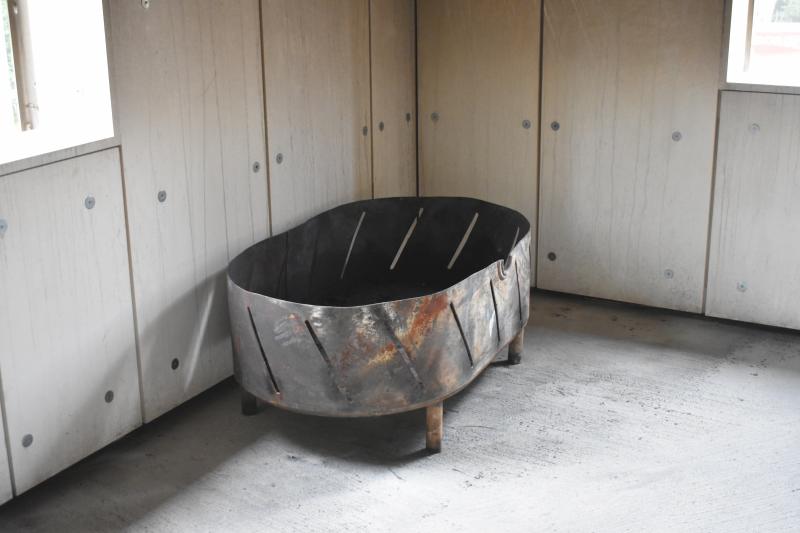 A place to contain the flames...and the mess that results. (Photo by Sarah Thompson)
A place to contain the flames...and the mess that results. (Photo by Sarah Thompson)
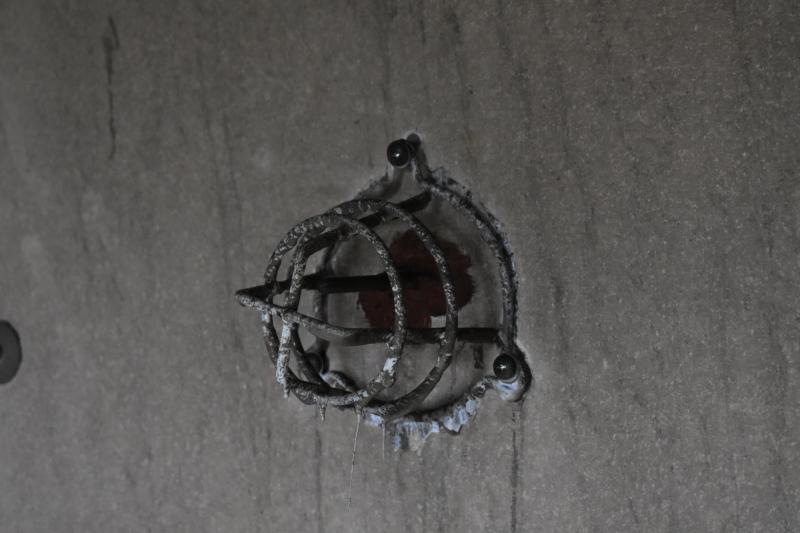 The protruding nail is actually a heat sensor. (Photo by Sarah Thompson)
The protruding nail is actually a heat sensor. (Photo by Sarah Thompson)
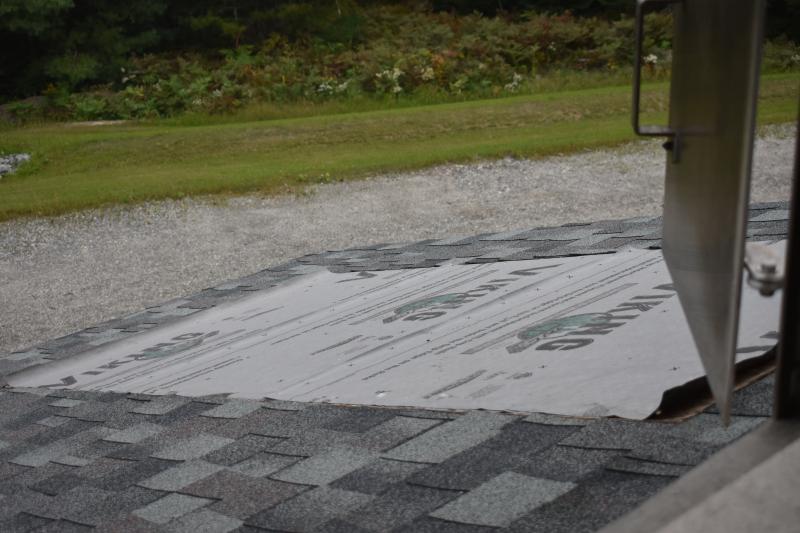 Second-story roof with a designated patch for cutting holes. (Photo by Sarah Thompson)
Second-story roof with a designated patch for cutting holes. (Photo by Sarah Thompson)
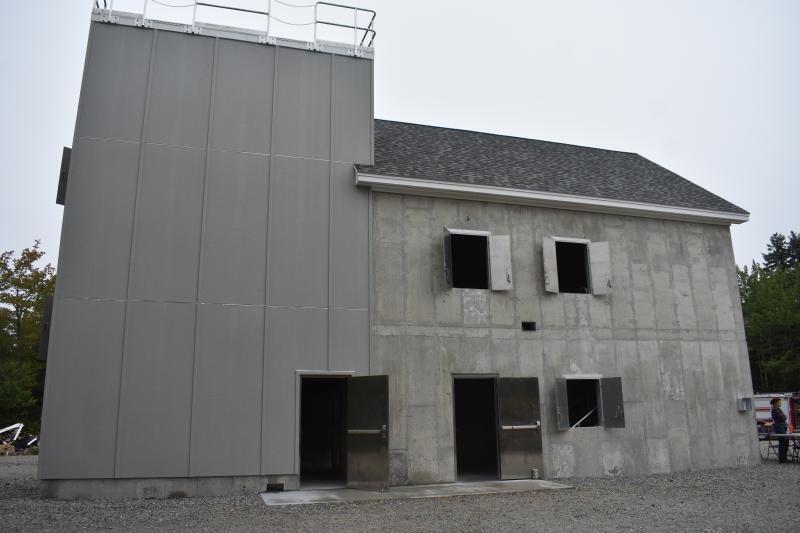 (Photo by Sarah Thompson)
(Photo by Sarah Thompson)
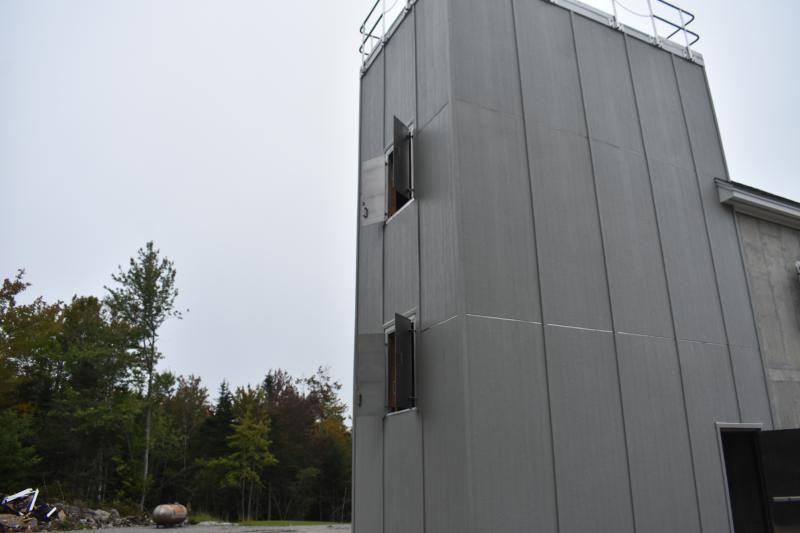 (Photo by Sarah Thompson)
(Photo by Sarah Thompson)
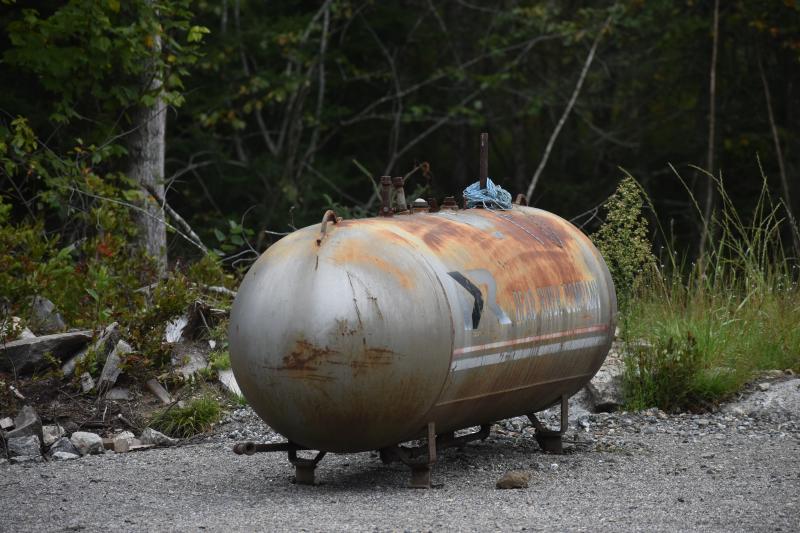 Outside propane tank. (Photo by Sarah Thompson)
Outside propane tank. (Photo by Sarah Thompson)
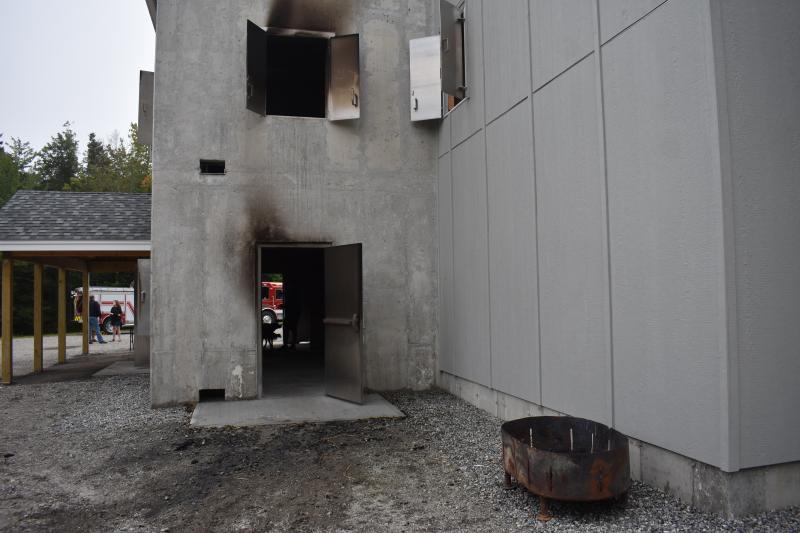 (Photo by Sarah Thompson)
(Photo by Sarah Thompson)
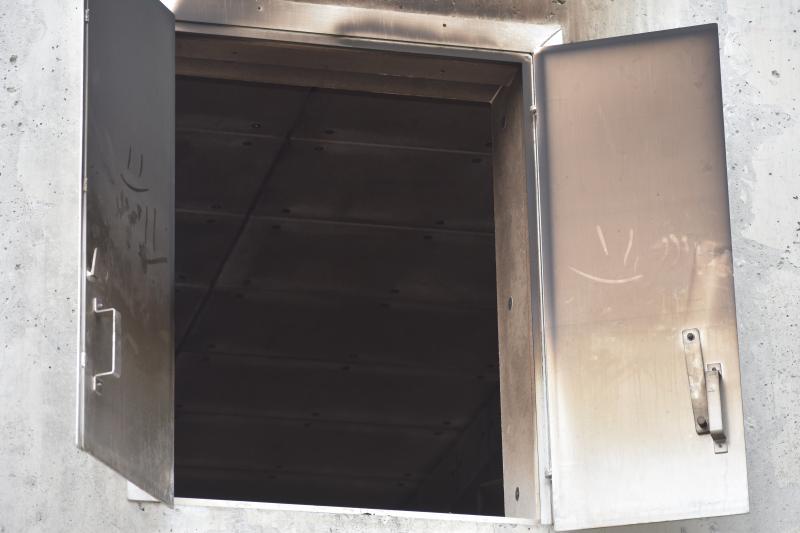 (Photo by Sarah Thompson)
(Photo by Sarah Thompson)
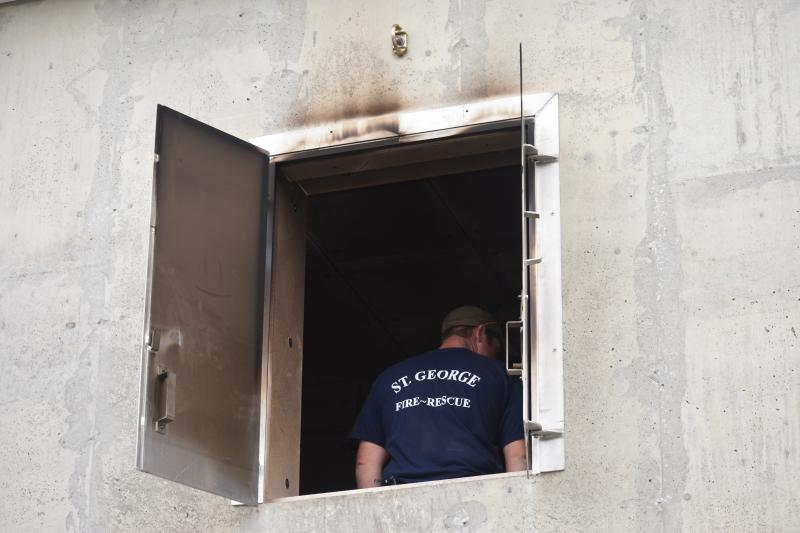 (Photo by Sarah Thompson)
(Photo by Sarah Thompson)
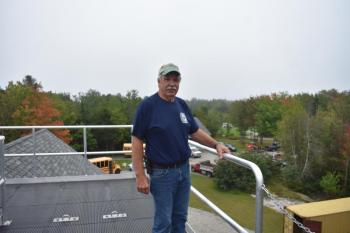 Former St. George Fire Chief and former Town Manager Timothy Polky stands at the top of the new multi-level Live Burn Fire Training Facility in Spruce Head. (Photo by Sarah Thompson)
Former St. George Fire Chief and former Town Manager Timothy Polky stands at the top of the new multi-level Live Burn Fire Training Facility in Spruce Head. (Photo by Sarah Thompson)
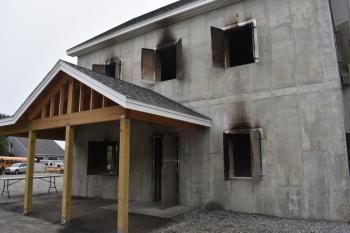 (Photo by Sarah Thompson)
(Photo by Sarah Thompson)
 St. George Asst. Chief Chris Leavitt, St. George Ambulance director Amy Dyer-Drinkwater, and Timothy Polky stand in front of the newest addition to the St. George Fire Department fleet. (Photo by Sarah Thompson)
St. George Asst. Chief Chris Leavitt, St. George Ambulance director Amy Dyer-Drinkwater, and Timothy Polky stand in front of the newest addition to the St. George Fire Department fleet. (Photo by Sarah Thompson)
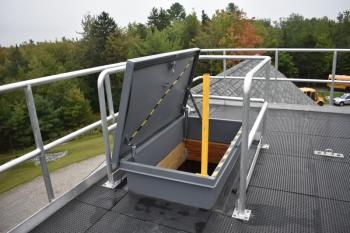 (Photo by Sarah Thompson)
(Photo by Sarah Thompson)
 (Photo by Sarah Thompson)
(Photo by Sarah Thompson)
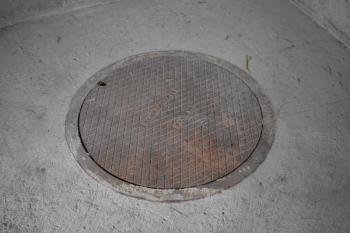 An outlet into the floor for contained-space drills. (Photo by Sarah Thompson)
An outlet into the floor for contained-space drills. (Photo by Sarah Thompson)
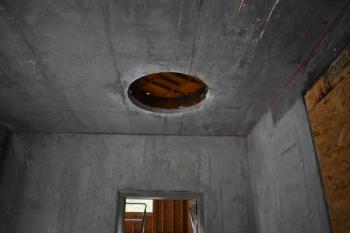 Imagine being lowered through this hole in the ceiling. (Photo by Sarah Thompson)
Imagine being lowered through this hole in the ceiling. (Photo by Sarah Thompson)
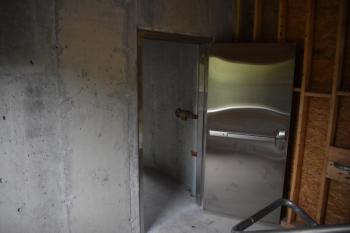 (Photo by Sarah Thompson)
(Photo by Sarah Thompson)
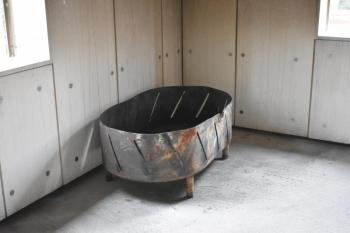 A place to contain the flames...and the mess that results. (Photo by Sarah Thompson)
A place to contain the flames...and the mess that results. (Photo by Sarah Thompson)
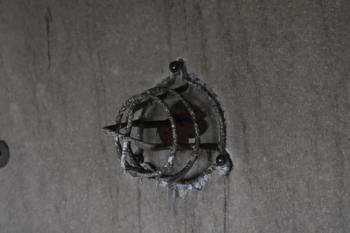 The protruding nail is actually a heat sensor. (Photo by Sarah Thompson)
The protruding nail is actually a heat sensor. (Photo by Sarah Thompson)
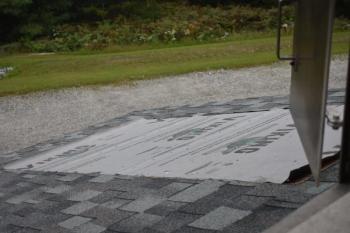 Second-story roof with a designated patch for cutting holes. (Photo by Sarah Thompson)
Second-story roof with a designated patch for cutting holes. (Photo by Sarah Thompson)
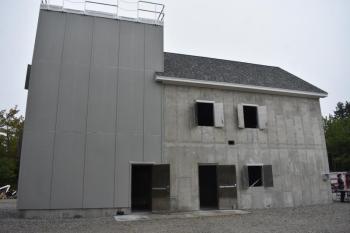 (Photo by Sarah Thompson)
(Photo by Sarah Thompson)
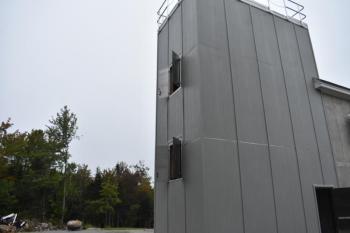 (Photo by Sarah Thompson)
(Photo by Sarah Thompson)
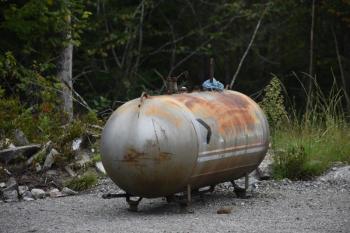 Outside propane tank. (Photo by Sarah Thompson)
Outside propane tank. (Photo by Sarah Thompson)
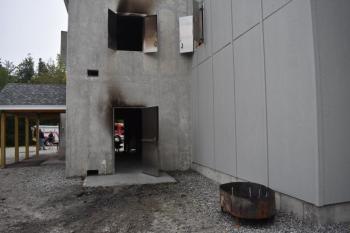 (Photo by Sarah Thompson)
(Photo by Sarah Thompson)
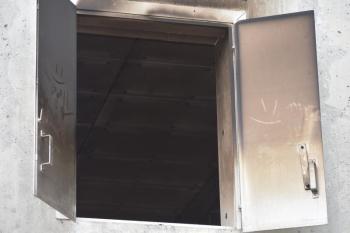 (Photo by Sarah Thompson)
(Photo by Sarah Thompson)
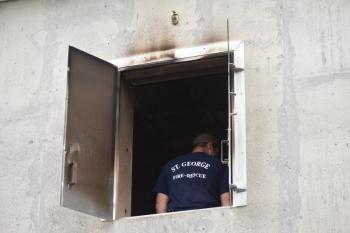 (Photo by Sarah Thompson)
(Photo by Sarah Thompson)
SPRUCE HEAD — The Live Fire Training building in the St. George neighborhood of Spruce Head is ready for trainings after a year of construction and 25 years of forethought. Its premise is to provide Midcoast firefighters with a venue to fulfill licensing obligations that would otherwise require travel time to Ellsworth or Hollis.
The new training center, located at St. George’s 274 Seal Harbor Road (Route 73) fire station looks like a half-finished, empty structure; rather, it’s a multipurpose facility that is expected to do a lot.
The goal is to better equip response teams with skills to meet all varieties of emergencies. And as of this month, the building — a hulking structure of cement and steel and space-age heat panels — is now open for action.
The St. George Fire Association, owner of the facility, has it set up for use for firefighters, emergency medical crews, police and more, according to former St. George Fire Chief and former Town Manager Timothy Polky.
“For a small town, we do a lot,” said Polky.
The St George Volunteer Firefighters and Ambulance Association (SGVFFAA) took the lead in getting the state-of-the-art facility built. The facility can serve one fire department at a time or it can serve area fire departments in a mutual aid scenario.
On Sept. 18, the association held an open house, as the community walked through, getting acquainted with firefighting techniques, and the building’s features.
The plan is to work with the Knox County Mutual Aid Association, and SGVFFAA hopes to raise funds to pay off the loans over the next five years. The Association intends to have the operating expenses of the facility paid for by the users of the facility.
Lined with panels similar to the materials used by space shuttles, the fire walls in three burn rooms can withstand temperatures of several hundred degrees-plus after undergoing special pre-treatments. Last week, St. George firefighters ignited fires to finalize those treatments.
Staircases stretch toward the roof, giving firefighters a sense of what it’s like to haul hoses up and down. Likewise, the stairs are also being eyed by the ambulance service as a place to practice stretcher ascents and descents.
Instructors can start a fire on an upper level, and have the crew ascend in search and extinguishment. Or, the instructors can start the firefighters upstairs and have them deal with a ground floor or basement fire.
Bolt clips on high exterior walls and the roof’s flooring will be used for rope-assisted window evacuations and rapelling —going over the side with ropes. It is necessary training, and the skills have been used several times in the past few years to rescue people in the nearby quarries, according to Polky.
A manhole cover interrupts a portion of the floorboards on the second level so that rescuers can simulate lowering crew into confined spaces and hauling the patient up through the hole again– should someone get stuck in a well or a tank.
“People don’t think about this: the big fishing boats, the draggers,” said Polky. “All the fish are kept in a hold. And the fishermen have to go in there to load their containers and take them out of the hold. Rotting fish cause a lack of oxygen.”
Elsewhere in the training facility, a section of roof is left without shingles so that roof ventilation can be practiced. An interior portion of wall is unfinished wood so that firefighters trapped in a room can learn to hack through a wall to get to safety.
Temperature sensors stick out of walls so that personnel can record the temperatures of fires. Fire pits keep flames secure.
Outside, a propane tank can be tinkered with and a wide driveway allows tanker trucks to come close.
In the future, a fire pond might allow for pump training.
“It’s been a long time coming,” said Polky.
A year of construction after a year of pandemic shutdown, a USDA grant, a loan, and fundraising – all started with an initial vision approximately 25 years ago. The state has money for burn facilities, but St. George didn’t fit the criteria.
Initially, 25 years ago, things were a lot simpler, Polky said. Resources were being offered by locals. A concrete contractor was willing to do the floor for nothing. A cement supplier was going to give at-cost. Several firefighters worked for a local contractor and were going to do the work themselves. The estimate at the time suggested an approximate $200,000 build.
Local engineering firm Gartley and Dorsky provided a set of plans for free. But then the specs came. The firefighters hadn’t thought to add mandatory panic hardware on the doors. And the tile treatments alone were about $250,000.
It was the little things that added up.
“It went from $250,000 to $750,000 real quick,” said Polky.
Now, the Firefighters Association has $550,000 in loans to pay. And though they seek donations to alleviate that burden, it’s deemed a positive burden for the foreseeable benefit of St. George, the Midcoast, and the region.
“It’s here now,” Polky said. “Every weekend, every night. Let’s use it.”
The St George Volunteer Firefighters & Ambulance Association is a 501(c)(3) nonprofit.
Tax deductible donations can be mailed to:
St George Volunteer Firefighters & Ambulance Association, P. O. Box 249, Tenants Harbor, ME 04860
For more information regarding SGVFAA, click here to visit their website.
Event Date
Address
274 Seal Harbor Road
Spruce Head, ME
United States


